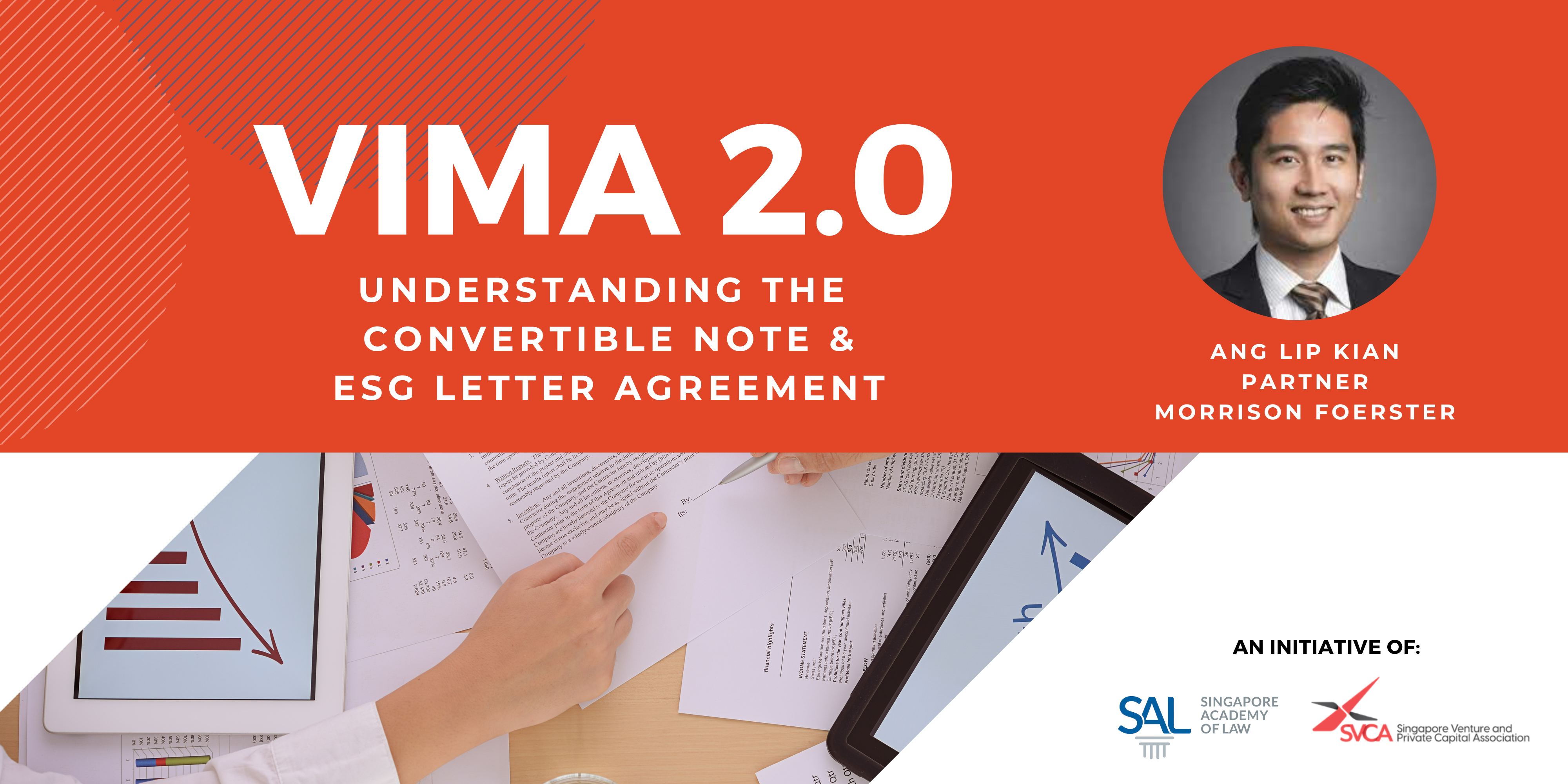ANG LIP KIAN ON VIMA'S CONVERTIBLE NOTE AND ESG LETTER AGREEMENT
Mr Ang Lip Kian, a partner at Morrison Foerster, explains the Convertible Note and ESG Letter Agreement, two of the new documents in the VIMA 2.0 suite.

Convertible Note
The model Convertible Note sets out the terms and conditions pursuant to which an investor will purchase a convertible note issued by a private company limited by shares incorporated in Singapore. A convertible note is typically issued by a company as a bridging facility before a subsequent financing round, which is often a preference share financing round. Among other things, a convertible note gives the investor the right to convert such note into shares issued by the issuer at such subsequent financing, where such conversion is usually at a price per share lower than that paid by investors at such subsequent financing.
The VIMA 2.0 Working Group’s decision to introduce a model Convertible Note was based on the belief that there would be strong demand for it in the Southeast Asia VC market. Until now, there has not been a model Convertible Note specifically tailored for this region. This decision seems particularly prescient in the current environment where fundraising via convertible instruments is gaining greater popularity over priced rounds.
ESG Letter Agreement
Investors have been making, and will increasingly be making, commitments around ESG to their investors and stakeholders. There is currently no standard set of terms in the market for the documentation of ESG-related obligations. VIMA 2.0 introduces a groundbreaking model ESG letter agreement that sets out some examples of how ESG-related provisions can be incorporated into an investment by way of a share financing or convertible note financing in a Singapore company. These provisions supplement the general investor protections that are already in the market (e.g., director appointment rights, board observer rights, reserved matters, information rights), and seek to achieve the following objectives:
- using representations and warranties, to help ensure the accuracy of ESG-related information provided by the company to the investor during due diligence, if any;
- using reporting rights, to help the investor monitor the company's ESG-related performance and compliance with ESG-related obligations (as well as that of other producers and service providers in its supply chain, where applicable), and to avoid greenwashing (i.e., where a business and/or its products and services are made out to be more sustainable than they actually are);
- using approval rights, to help protect against changes to the company's ESG mission or purpose; and
- finally, using affirmative or negative obligations, to help ensure that the company complies with stipulated ESG-related obligations and standards
Short-form and long-form versions of the model ESG letter agreement are available. Early-stage companies may use the short-form letter agreement, while later-stage growth or matured companies may use the long-form version. We are grateful for the robust and thoughtful exchange of ideas among the numerous like-minded and leading industry players that went into producing these groundbreaking ESG letter agreements.
We are confident that they will help to catalyse the adoption of ESG-related provisions in M&A, private equity, and venture capital investment transactions and, more generally, aid purchasers, investors, and companies alike in their respective ESG journeys.
Access the VIMA 2.0 suite here.






